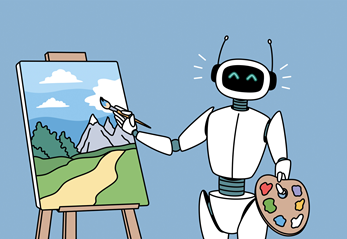By: Lauren Wu
For over 40 years, A.I. has been generating images, and now, in 2024, it’s even harder to figure out if an image is A.I. or not, especially on social media. Comparing early models like AARON, developed by Harold Cohen in the late 1960’s, to recent A.I. such as Adobe Firefly, the recent ones are better because they have been developed over time.
There are three main tips for spotting these A.I. images. First, look at the details, especially the fingers, because they’re a small part of the body. A.I. produces images by looking at photographs other people have taken, so they miss out on some details, for example, hands. Most photographers aren’t just photographing the hands, so A.I. sometimes struggles with that. Another difference is that when A.I. writes words, it relies on patterns instead of text. This means that words sometimes just come out as gibberish since they usually get small and some words wrong.
Next, the image shouldn’t look too perfect. The face sometimes has an airbrushed look, which leads to it looking very smooth. Another way it can be too perfect is that sometimes the environments are in just the perfect location. When you take a picture, the location is not always perfect.
Lastly, do a reverse image search. All you have to do is right click on the picture and press search image with Google. This helps because it leads to the image’s source where you could be more sure of identifying if the image is A.I. or not.
Once you know these three tips that help you interpret if what you are looking at is true, you can better identify images A.I. has made.
Great revision Lauren. It was nice chatting in office hours today 🙂
Word count-298
Link-https://www.bbc.co.uk/bitesize/articles/z6s4239
Link- https://canterbury.ai/ai-in-art/











